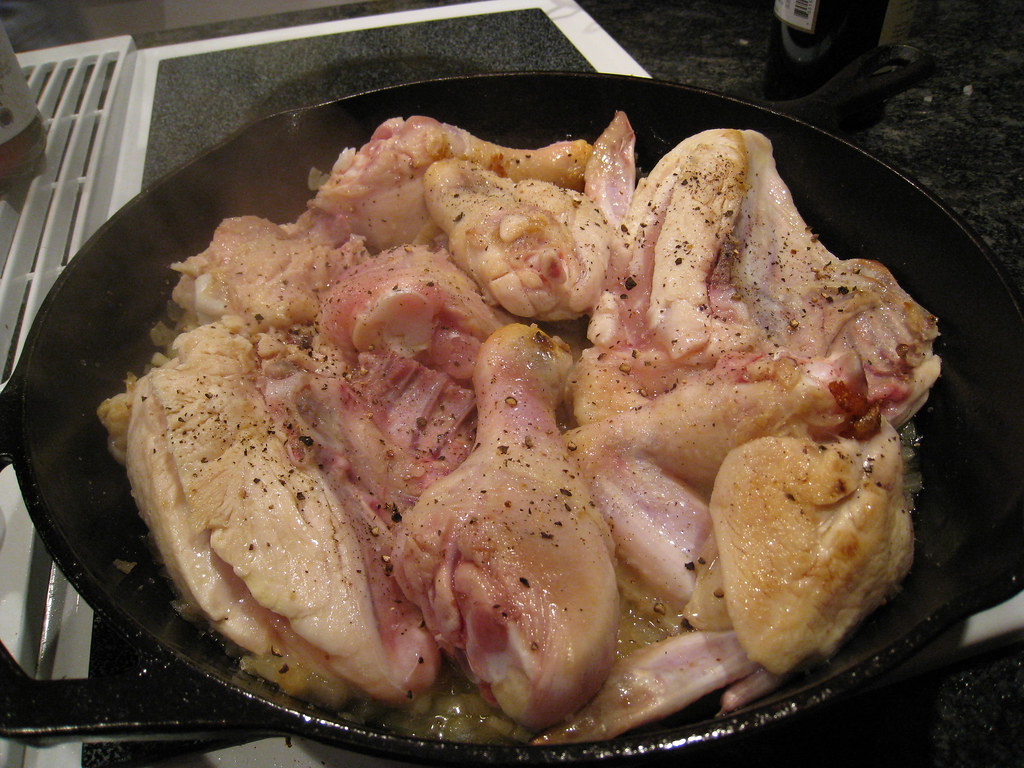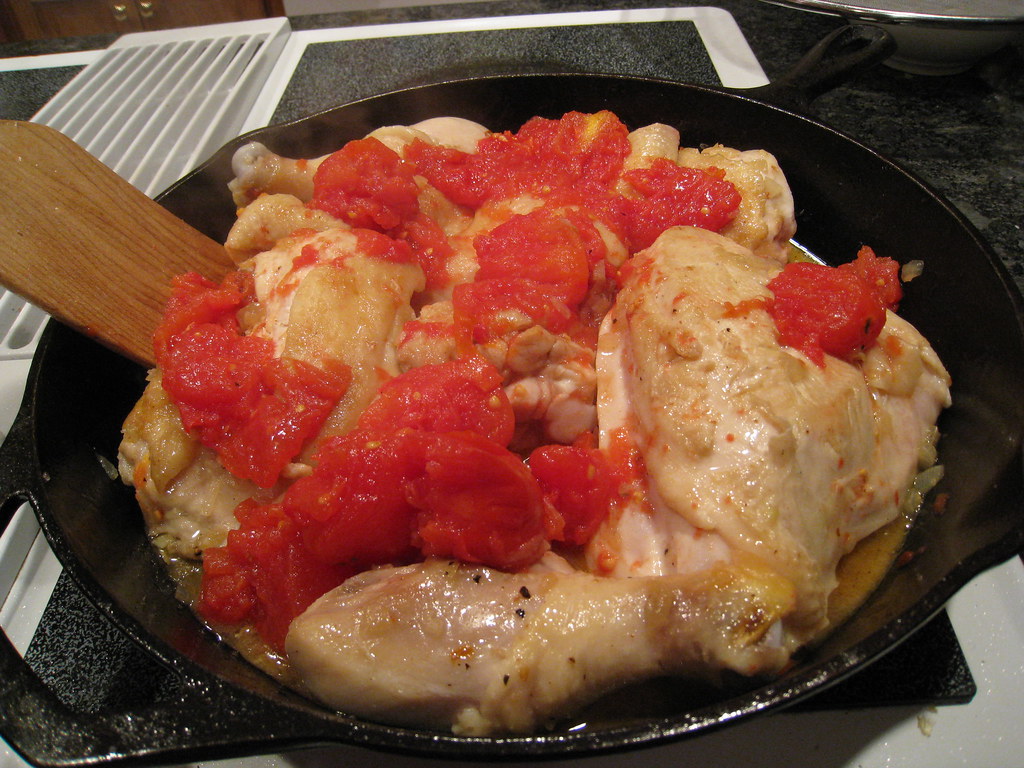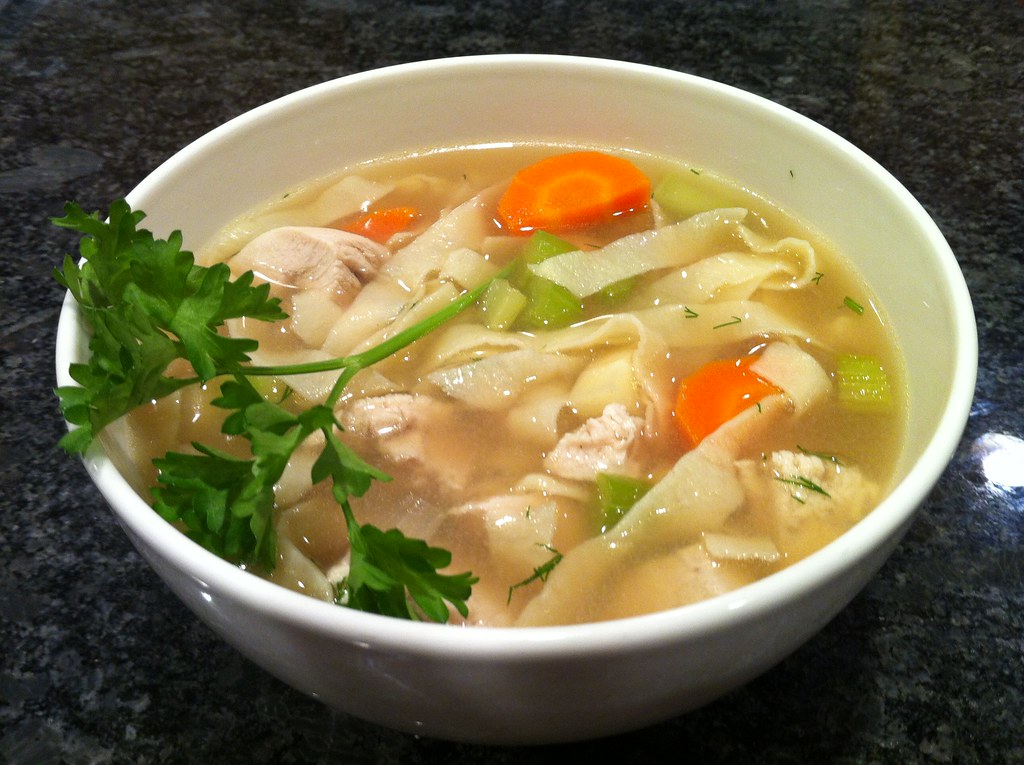My dad could cook four things: haddock, meatloaf, spaghetti with meat sauce, and chicken cacciatore. After my parents divorced he cooked a lot more often, and these were staples of his diet. His chicken cacciatore was a hybrid of two recipes, and I think it's where he learned an important lesson about how cooking can be very individual.
He had visited my sister's family for dinner one night when she made chicken cacciatore, and he liked it so she told him it was simple and gave him her recipe. He tried making it a few times but couldn't exactly replicate what he remembered, so he called my mom to ask what he was doing wrong. My mom responded by giving him her own cacciatore recipe. Now he had two recipes for the same dish, and I think seeing the differences in front of him made something click. He stopped looking at recipes as precise formulas, and instead he cobbled the two recipes together as a guide to cooking something he'd enjoy.
It's fitting that my dad learned this lesson with chicken cacciatore of all dishes, since it's such a varied dish. You can order cacciatore in two different restaurants and get two plates that barely resemble each other. In her classic
Italian cookbook, Marcella Hazan offers two cacciatore recipes after noting that "uncounted permutations" exist. The basic structure, she says, is stewed chicken with tomato and onion, and from there people add or change all kinds of things.
I don't really have a chicken cacciatore recipe, and I want to develop one. So I'm starting basic. Marcella Hazan's "New Version," found on page 331–32 of her aforementioned cookbook, is the simpler of her two recipes. Hazan's ingredients are simple and I stuck with them:
- a 3- to 4-pound chicken, in eight pieces
- extra-virgin olive oil
- 1 onion, sliced
- 2 garlic cloves, peeled and sliced
- one-third cup white wine
- 1 jar of peeled Italian tomatoes

I always brine chicken before cooking. The short explanation is that brining, or soaking the chicken in a salt-water solution, helps to produce a juicier, flavorful meat. All you need is salt and water. Chefs put lots of different things into brines, and sometimes I'll add sugar or some black peppercorns, but mostly it's just salt and water. Afterward you need to thoroughly rinse the chicken so it won't be too salty when you cook it. I let it soak in a pure-water bowl for a bit, changing the water once or twice. Then give the chicken pieces a chance to dry.
The first step is to brown the chicken, by cooking it over medium heat until the skin forms a golden crust. (If the skin is still wet from rinsing, it won't brown.) Marcella Hazan suggests this step in the middle of her recipe, but I do it first. Partly, this is because I find it's easier to brown chicken in a pan that isn't cluttered with bit of onion. But also, I feel like it makes more sense to do first. The essence of chicken cacciatore is a fricassee, which is basically a stew. That's something that you build upward, from sautéing the onion to adding the meat and vegetables, and I feel like browning the chicken is more rightly thought of as part of the
mise en place—like dicing the onion or peeling the garlic—than part of the actual cooking process. It doesn't build the stew, it prepares the chicken to be added.

If you think about everything above as prep, then the actual recipe is remarkably simple. The first real "cooking" step is to heat the olive oil and then cook the onion until it becomes translucent. Then add the garlic and sauté them together. This is the basis for every Italian dish that I cook, from my various acclaimed pasta sauces to my unique family-recipe lasagna. It's the foundation for many dishes.

Next, add the browned chicken pieces and the white wine. Turn over the chicken pieces every couple minutes, until the wine is reduced by about half. Take this opportunity to add salt and pepper. It's important to add salt early in the cooking process rather than adding it later ("to taste") because the salt helps the dish develop its flavor.
I can be obsessive about turning-over meat. It comes from grilling, which is my favorite cooking method and how I spend most of my summers. When you grill hamburgers, there are two methods. You can flip each patty four times to create flawless criss-cross scoring, or you can flip every 60 seconds to ensure thorough, even cooking. The first method guarantees burgers that
look good, but the second is how you make burgers that
taste good. I extrapolate and so I probably turn-over meat more often than is strictly needed in other contexts, but I figure turning it over too often can't hurt. Not often enough, definitely will!

The last addition is the tomatoes. Marcella Hazan advises cutting the tomatoes, whether you use fresh or canned. I don't think this is necessary. You are going to be stewing this dish for another 40 minutes, maybe an hour, and the tomatoes are going to basically macerate while being cooked. Cut them jaggedly, if at all, and just throw them in. They will fall apart as they cook.

Now you babysit the stew. Cover the pan partially, because you don't want to stifle the flavor from developing but you also don't want to lose too much water. Marcella Hazan notes that you may need to add a few tablespoons of water if you find that it cooks down too much, but I've never had to. Turn over the chicken periodically, and baste it with liquid from the pan. The benefit to brining chicken is that you can cook it for longer without worrying about it drying out, and between the brine and the stewing process, I like to cook this cacciatore until the meat begins to come easily off the bone. It should take about an hour.
When we call this a "stew," we're referring more to the method of cooking than how the final dish will look. It's a plate of chicken, not a bowl of stew. But my kitchen is already familiar with chicken that's been roasted, baked, fried, grilled, etc., so stewing is a welcome addition to the repertoire.
I've made this recipe a few times. I'm still learning. I have some ideas what I like and some ideas for future variations, like adding bell peppers. The bottom line is, I really like this dish. My dad was a supermarket chef; he wasn't cooking with imported Italian tomatoes and free-range chicken, and he wouldn't have cared about the difference between cooking with a lid or not. What's neat about cooking is that he and I could approach it from such different perspectives, yet still be on the same page.










